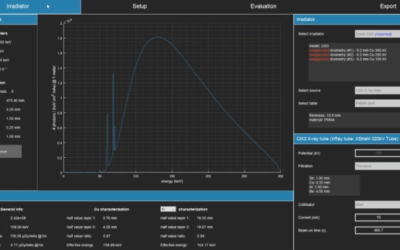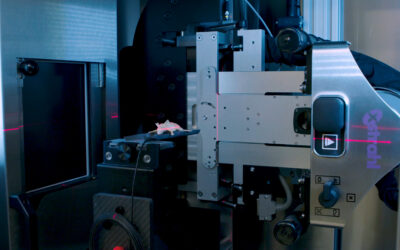As part of Xstrahl’s clinical education program, we invited Dr. Jason Beckta, Radiation Oncologist and Medical Director at Rutland Regional Medical Center, to describe more about low-dose radiation therapy (LDRT) and how it works. For more information, including presentation slides and citations please listen to the full podcast, “How to Get Your First Patient, Setup, and Treatment Planning.”
• Listen on Apple Podcast
• Listen on Spotify
Mechanism of Action
LDRT uses small, precisely targeted doses of ionizing radiation—typically around 0.5 gray per session, totaling about 3 gray over six sessions—to reduce inflammation in affected joints. Dr. Jason Beckta, a radiation oncologist featured in the “Out of the Basement” podcast series, explains that preclinical research has shown that low doses of radiation can modulate the immune response by altering the behavior of inflammatory cells.
Specifically, LDRT tends to suppress pro-inflammatory cells like macrophages and enhance anti-inflammatory pathways, leading to reduced pain and swelling in the joints. Interestingly, laboratory models suggest LDRT may even support bone health by stimulating osteoblasts and inhibiting osteoclasts, aiding in bone repair and strength.

Clinical Approach and Patient Selection
In his educational podcast, Dr. Beckta emphasizes that LDRT is typically not the first line of treatment for autoimmune-related arthritis. However, as these conditions progress, they often lead to secondary osteoarthritis, where LDRT becomes more applicable—especially in older adults who have dealt with chronic joint pain for decades.
In practice, patient selection is crucial. Candidates are often individuals over 50 who experience significant, localized joint pain that has not responded well to traditional therapies. Dr. Beckta shared real-world examples, such as treating a painful thumb joint in a patient with rheumatoid arthritis, focusing only on the joint that showed degenerative signs confirmed through imaging.
Benefits, Risks, and Misconceptions
One of the most common concerns about LDRT is the potential for radiation-induced side effects, including bone loss or secondary cancers. However, Dr. Beckta clarifies that these risks are primarily associated with high-dose radiation treatments used in cancer care. In contrast, LDRT operates at significantly lower doses, which research has shown to be safe and, paradoxically, even beneficial to bone health.
Despite its proven efficacy in Europe—especially Germany, where 50,000 patients receive LDRT annually—its adoption in the United States remains limited. Nonetheless, interest is growing, driven by both clinical results and increasing awareness among physicians and patients.
If you would like to learn more about treating patients with osteoarthritis using LDRT, listen to Dr. Beckta’s Q&A on the topic. To learn more about LDRT, listen to the full LDRT podcast mini-series on Apple Podcasts or Spotify.







